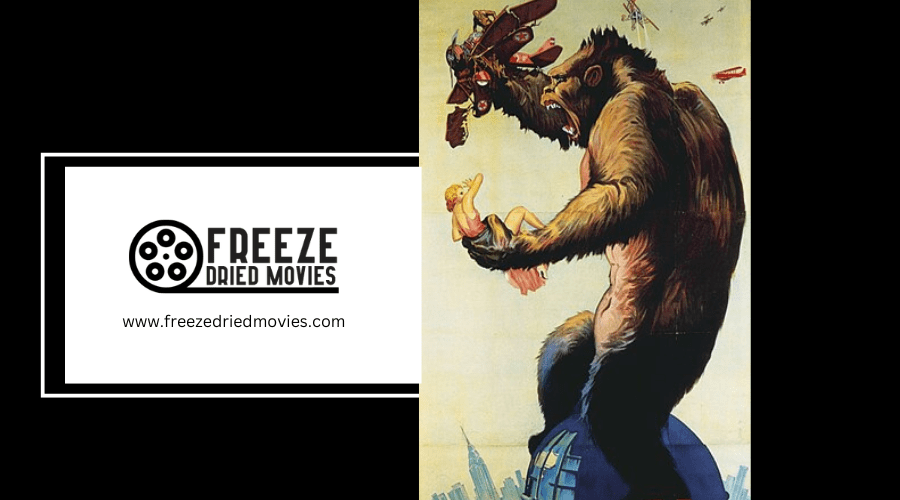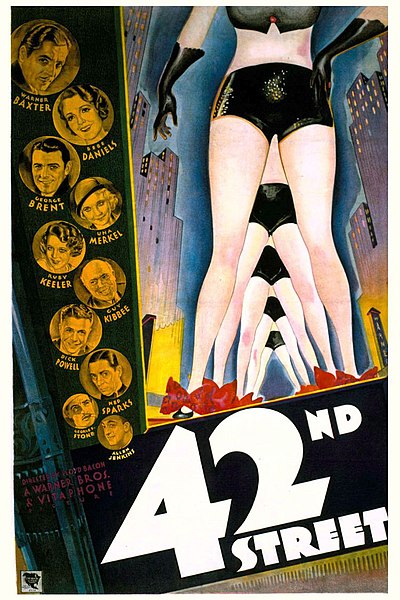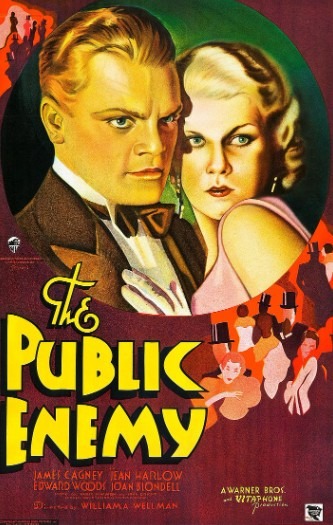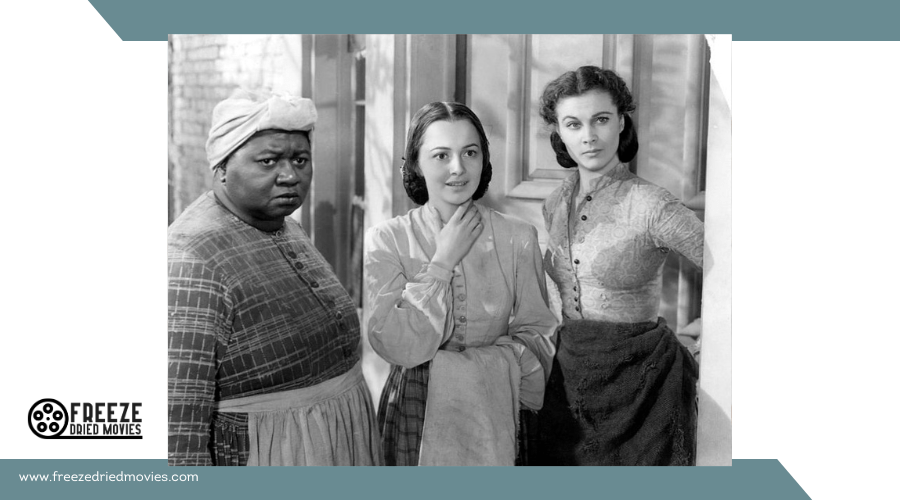The Best 1930S Movie Posters: Iconic Art From a Golden Era

Exploring the best 1930s movie posters unveils a realm where vibrant colors and bold typography transcended mere promotion to become captivating works of art. Iconic posters from films like "Gone with the Wind" and "King Kong" not only showcased star power but also reflected the societal shifts occurring during the Great Depression. Artists such as Al Hirschfeld and Saul Bass transformed these promotional pieces into collectible masterpieces. But what imbues these posters with timeless appeal, and how did they shape the visual culture of their era? Let's delve into the magic behind these iconic artworks.
The Origin of Movie Posters
The Evolution of Movie Posters
Movie posters evolved as essential marketing tools for film studios. Early designs aimed to attract audiences with vivid, engaging artwork, especially targeting the illiterate. Influenced by vaudeville, fairs, and circus themes, these posters were lively and theatrical, capturing immediate attention.
From the mid-1920s to the 1940s, unique artistic styles in poster design emerged. Renowned artists like Al Hirschfeld and John Held Jr. contributed their distinctive illustrations, adding sophistication to promotional materials. The advent of color offset lithography in the 1920s was pivotal, enabling richer colors and more intricate designs, which significantly enhanced the artistic quality of movie posters.
Art Deco Influence
The Art Deco style significantly influenced movie poster design during the 1930s. The geometric patterns, bold colors, and streamlined forms characteristic of Art Deco introduced a modern aesthetic to vintage movie posters. This style not only emphasized artistic elements but also highlighted star faces and strong typography, aligning with the era's fascination with celebrity culture.
Notable films like "Gone With The Wind" featured Art Deco elements in their promotional materials, contributing to their iconic status. The advent of color offset lithography in the 1920s enhanced the vibrancy and artistic quality of these posters. Studios like MGM embraced Art Deco principles by incorporating minimal backgrounds, white spaces, and bold titles, creating a signature look synonymous with the Golden Age of Hollywood.
Art Deco's influence on vintage movie posters was more than a stylistic choice; it mirrored the modernity and cultural shifts of the time. By focusing on sleek, minimalistic designs, these posters captured the essence of 1930s cinema, making them timeless pieces of art.
Iconic Films of the 1930s

Despite the economic hardships of the 1930s, the decade produced some of the most enduring and iconic films in cinema history. "Gone with the Wind," released in 1939, stands out with its lavish production and epic storytelling, capturing the imaginations of audiences and critics alike. This film isn't just a box office titan; it's a cornerstone of Hollywood's Golden Era.
Gangster films like "The Public Enemy" and "Scarface" are also quintessential to the 1930s. These movies mirrored the societal climate and featured unforgettable performances from legends like James Cagney and Edward G. Robinson. The gritty narratives and intense character portrayals set a high bar for crime dramas.
Musicals flourished during the Great Depression, offering much-needed escape. Innovations in sound, initiated by "The Jazz Singer" in 1927, paved the way for musical extravaganzas like "Top Hat" and "42nd Street." These films, with their catchy tunes and elaborate dance sequences, epitomized the escapist entertainment that audiences craved.
The 1930s was truly a Golden Era in cinema, with iconic films that left an indelible mark on history, resonating through subsequent decades.

Studio Branding Styles
Exploring studio branding styles in the 1930s reveals how each major film studio crafted a unique visual identity through its movie posters. MGM employed white backgrounds, bold titles, and star portraits, emphasizing their star power with a clean and recognizable brand. This approach gave their posters a distinct, uncluttered look that focused on the stars.
Warner Brothers adopted a duo-tone portrait style and headline-style typography after 1938, enhancing visual appeal and building a strong brand identity. Their distinctive typography and imagery set them apart from competitors.
Twentieth Century Fox favored saturated color art throughout the 1930s. This vibrant and memorable style made their posters stand out, drawing attention and creating a lasting impression.
RKO and Columbia used richly colored art depictions in their promotional materials. Their eye-catching designs emphasized their cinematic offerings and attracted viewers. Collectively, these branding strategies contributed to the artistic evolution of movie posters during Hollywood's Golden Era.
Posters and the Great Depression
During the Great Depression, movie posters transcended their role as mere advertisements, becoming beacons of hope and escapism for struggling audiences. Studios employed bold, artistic designs to captivate the public, and these posters have since evolved into highly collectible artifacts. Their vibrant colors and star-studded portraits not only showcase a rich artistic evolution but also fetch impressive prices at auctions today.
Escapism During Hard Times
During the Great Depression, movie posters became a vibrant form of escapism for the public. Films served as beacons of hope, with theaters offering a temporary respite from the harsh realities of daily life. The increase in movie attendance meant that posters needed to be eye-catching and enticing, leading to a colorful evolution in their design.
Vintage 1930s movie posters, particularly for genres like gangster films, are now highly collectible. These posters featured bold colors and minimal backgrounds, capturing the essence of escapism that the films provided. Collectors today value these artifacts not only for their artistic beauty but also for their historical significance as symbols of resilience and creativity during tough times.
Key aspects of 1930s movie posters that contributed to their lasting appeal include:
| Element | Description | Impact |
|---|---|---|
| Bold Colors | Vivid hues to attract attention | Enhanced visual appeal |
| Minimal Backgrounds | Focus on central characters and themes | Clear and powerful messaging |
| Escapist Themes | Stories of adventure, romance, and crime | Provided mental escape |
| Collectibility | High demand for original posters at auctions | Cultural and financial value |
These posters were more than just advertisements; they offered an escape and a reminder of joy during challenging times.
Artistic Evolution Amid Struggles
Amid the economic turmoil of the Great Depression, movie posters underwent a remarkable artistic evolution, transforming into vibrant canvases that captured public attention. Despite widespread economic struggles, films provided an essential escape for many, driving studios to invest in unique poster artwork. They enlisted renowned artists such as Al Hirschfeld and John Held Jr., who infused their distinct styles, ensuring that movie posters were both visually appealing and emotionally engaging.
The introduction of color offset lithography in the 1920s played a pivotal role in this transformation. It enabled the production of more colorful and eye-catching designs, which became a hallmark of 1930s movie posters. These designs, often characterized by the iconic Art Deco style with geometric patterns and bold colors, captivated audiences and drew them into theaters, offering a brief respite from the harsh realities of the Great Depression.
Thus, vintage 1930s movie posters transcended their role as mere promotional tools, emerging as a significant art form. Their cultural and historical significance during the Great Depression remains recognized today, reflecting how the period's artistic evolution amid struggles created lasting, iconic imagery.
High Collectible Value
Collectors' fascination with 1930s movie posters extends beyond mere nostalgia; it's about acquiring a tangible piece of history that weathered the Great Depression. During this period, movies offered essential escapism, driving up the demand for film posters. Consequently, vintage 1930s movie posters have become highly collectible, especially those from iconic studios such as MGM and Warner Brothers.
The high collectible value of these posters stems from their rarity and historical significance. For instance, the poster for "The Public Enemy" is exceptionally coveted, with only one known copy in existence, significantly boosting its market value among collectors.

Additionally, the economic hardships of the Great Depression catalyzed a distinctive artistic evolution in movie posters. They evolved from simple promotional materials into cultural artifacts, encapsulating a crucial era of American cinema and art.
Here's a concise overview of why these posters are so collectible:
| Feature | Significance |
|---|---|
| Period | Great Depression |
| Studios | MGM, Warner Brothers |
| Rarity | Few known copies |
| Artistic Value | Unique designs influenced by economic struggles |
| Cultural Significance | Represents 1930s American cinema |
Understanding these factors elucidates why vintage 1930s movie posters remain highly valuable to collectors today.
Collecting Vintage Posters
When you start collecting vintage 1930s movie posters, you'll quickly realize their rarity and value make them highly sought after, especially those from major studios like Warner Bros. Iconic posters, such as the only known copy of "The Public Enemy," exemplify the excitement of remarkable discoveries. These rare finds, including lobby cards and half sheets, often feature early appearances of famous stars and can significantly enhance the worth of your collection.
Rarity and Value
Due to their rarity and condition, collecting vintage posters from the 1930s is a challenging yet rewarding endeavor. Original gangster movie posters from this era, such as "The Public Enemy" and "Scarface," are among the rarest and most valuable collectibles. For instance, only one known copy of "The Public Enemy" exists, while no known copies of "Scarface" survive, making these pieces exceptionally valuable.

When delving into this field, you'll encounter various formats that impact rarity and value. Lobby cards, often produced in sets of eight, are highly sought after, especially those featuring early appearances of stars like Humphrey Bogart. These cards enhance any collection with their unique appeal.
Consider these other rare formats:
- Press books: These often contain unique artwork, elevating a poster's value.
- Half sheets: As one of the rarest formats, many remain undiscovered, making them highly desirable.
- Pre-1936 gangster film inserts: Particularly scarce, with only eight of James Cagney's 23 films having surviving inserts.
- Single copies: Like the sole known copy of "The Public Enemy," single copies can command significant value.
Understanding these factors can make your collecting journey both exciting and rewarding.
Popular Studios
One of the most enchanting aspects of collecting 1930s movie posters is the distinct branding styles of major studios like MGM, Warner Brothers, and Twentieth Century Fox. MGM's posters often featured white backgrounds and star portraits, offering a clean and elegant look. In contrast, Warner Brothers embraced duo-tone portraits and bold typography, creating a striking visual impact. Twentieth Century Fox, another giant of the era, produced richly colored artworks that are now highly sought after by collectors.
If you're a fan of Humphrey Bogart, you'll find Warner Brothers' vintage lobby cards particularly enticing. These cards, often showcasing early appearances of legendary stars, are prized for their stunning artwork and historical significance. The careful design elements from these studios have become a hallmark of 1930s cinema, making their posters a valuable cache for enthusiasts.
Collectors are drawn to the artistic appeal and nostalgic value of these posters. The market remains strong, with original prints from notable studios like Columbia, RKO, and Twentieth Century Fox fetching high prices. Whether you're a seasoned collector or just starting out, these vintage posters offer a unique glimpse into Hollywood's Golden Age.
Notable Discoveries
Collectors of 1930s movie posters are often captivated by notable discoveries that occasionally surface in the market. These findings can invigorate a collection, especially when the items are particularly rare or in pristine condition. Original gangster movie posters from this period, such as those for "The Public Enemy" (with just one known copy) and "Scarface" (with none known), are among the rarest collectibles. Discovering such gems is a significant event.
One of the most thrilling aspects of collecting is the occasional revelation of rare items, like the 2011 Berwick Discovery, where stacks of posters and mint sets were found from former theater projectionists. These moments underscore the importance of:
- Lithography printing: Essential for creating the vivid and detailed posters of the era.
- Press books: Containing unique artwork and serving as valuable promotional tools.
- Lobby cards: Produced in sets of eight, featuring stunning artwork and notable designs.
- Pre-1936 gangster film inserts: Exceptionally rare and highly sought after.
Whether you're hunting for a lobby card featuring a young Humphrey Bogart or a rare James Cagney film insert, the thrill of notable discoveries keeps collectors perpetually engaged.
Poster Formats and Variations
The 1930s saw a diverse array of movie poster formats, each with unique characteristics and allure. From the ubiquitous one-sheet to the rarer half-sheets, these posters were designed to captivate audiences and promote films across different venues. Half-sheets, notable for their scarcity, were often sold as sets, making them highly sought after by collectors.
Window cards were another popular format, utilizing the same artwork as one sheet but offered at a more affordable price, making them accessible to a broader audience. These cards provided a cost-effective method for theaters to advertise upcoming films. Notably, Warner Brothers introduced a unique linen stock for their window cards in 1937, enhancing both quality and appeal.
Large-format posters, like three-sheet and six-sheet posters, are extremely rare today due to limited preservation. These massive prints, such as the six-sheet for "Angels with Dirty Faces," were originally used for dramatic visual impact and are now prized for their rarity and historical significance.
Each poster format from the 1930s contributes to the rich tapestry of cinematic history, each telling its own story.
Notable Poster Artists
Prominent artists like Al Hirschfeld and John Held Jr. left an indelible mark on the 1930s movie poster scene, blending their unique styles with the burgeoning art of film marketing. These notable poster artists brought a fresh perspective, making the art form an essential part of film promotion. The introduction of color offset lithography in the 1920s played a significant role, allowing for greater vibrancy and detail in their work.
The Art Deco style, with its geometric designs and bold colors, dominated the aesthetic of the decade. This trend showcased the talents of numerous artists who focused on:
- Emphasizing star faces: Artists highlighted the charisma of movie stars, making their faces the focal point.
- Strong typography: Clear, striking text helped catch the audience's eye and convey the film's title effectively.
- Simplified scenes: Moving away from detailed backgrounds, artists created more dynamic and impactful visuals.
- Collaboration with studios: Artists worked closely with film studios to establish recognizable branding and artistic trends.
The collaboration between studios and these talented individuals not only sold tickets but also defined a period of cinematic history. These artists turned movie posters into timeless pieces of art deserving of admiration.




